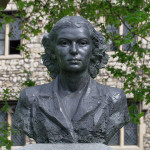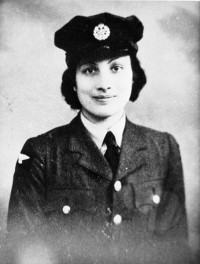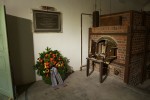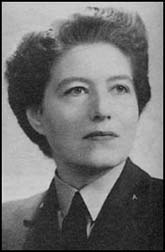
We have all read or seen articles and films on the activities of spies during World War II. Usually these are about the men of MI6 (British), OSS (America), and to a much lesser extent, the Soviet Union’s spy networks (e.g., The Red Orchestra). We’ve recently heard (thanks to declassification) about the wartime contributions of British women in regards to code breaking and Operation Enigma. However, there was a group of young and very dedicated women who were important members of the clandestine British operation called Special Operations Executive (SOE).
The SOE was formed in July 1940 on the orders of Churchill. There is some question by historians as to its effectiveness during the German occupation of European territories but to the SOE agents, their activities were extremely beneficial to the various Resistance movements, especially in France. It was also very dangerous.
The organization was divided up into departments based on the country they operated in. The network in France was code named “F Section.” Women from the First Aid Nursing Yeomanry (FANY) or the Women’s Auxiliary Air Force were recruited for the SOE. A total of 55 women served as agents during the war (39 of them in F Section). Thirteen or one third of the women dropped into France went missing and it was ultimately determined they had been murdered in various Nazi extermination camps.
The Princess Spy

Noor Inayat Khan was the first female SOE agent dropped into France. She was arrested and brutally interrogated. She was held under the “Nacht und Nebel” policy (refer to my blog post Night and Fog) and ultimately transferred to the Dachau concentration camp. Noor and three other SOE women agents were executed with a shot to the back of the head.

Each SOE cell was comprised of four agents: radio operator, arms and sabotage instructor, courier, and the circuit organizer (i.e., leader). Responsibility for the recruitment and deployment of F Section agents fell to Vera Atkins (1908–2000) while overall command of F Section was handled by Maurice Buckmaster (1902–1992).
Vera Atkins
During mid-1943 it was becoming clear the SOE spy cells in France had become compromised. Rather than believing reports from several field agents and pulling agents out, Buckmaster and Atkins continued to drop more of them in; many times into the waiting arms of Nazi patrols. Immediately after the end of the war, Atkins began an intensive personal search for the 118 missing F Section agents including 14 women. She found that only one woman survived (Ravensbrück concentration camp) while the other 13 were murdered by the Nazis in the camps—lethal injections, shot, or gas chamber. Learn more here.

Ian Fleming (1908–1964), author of the James Bond series, was a British naval intelligence officer during World War II. He personally knew Atkins and Buckmaster and reportedly used them to create the fictional characters of “Miss Moneypenny” and “M,” respectively.
After the end of the war, SOE was integrated into the British foreign intelligence service we know today as MI6. Until recently, there was only one plaque in England (Beaulieu Abbey, Hampshire) and one in France (Valençay in the Loire Valley) commemorating the agents of the SOE. Today, greater recognition is being given to these very brave spies.
We Need Your Help
Please tell your friends about our blog site and encourage them to visit and subscribe. Sandy and I are trying to increase our audience and we need your help through your friends and social media followers.
Thank You
Sandy and I appreciate you visiting with us. We have some exciting things on the horizon and we’ll keep you updated as we go along.
What’s New With Sandy and Stew?
We are working with Roy, our book designer, to finalize the construction of the walking tour book of medieval Paris. These two volumes are expected to be published in January or early February 2016.
Stew is working on creating the walks and individual stops for the next books: Where Did They Put the Gestapo Headquarters?—A Walking Tour of Nazi Occupied Paris (1940–1944). It’s clear that almost every building in Paris has a story associated with the Occupation years. It is a matter of identifying them and then prioritizing the stops for you. This is quite a process considering the tangents and rabbit holes I end up going down. But it is a lot of fun if not quite depressing at times. One of my friends, Mark Vaughan, has suggested a walking tour book based on Napoléon. What do you think?
We have a lot of stories and we’re looking forward to sharing these with you. Please continue to visit our blog site and perhaps you’d like to subscribe so that you don’t miss out on our blog posts, past and current.
Share This:
Follow Stew:
Find Stew’s books on Amazon and iBooks.
Please note that we do not and will not take compensation from individuals or companies mentioned or promoted in the blogs.
Walks Through History
Copyright © 2015 Stew Ross


Thank you for highlighting the contributions of these amazingly courageous women.
Thank you Roger for reaching out to us. These are amazing stories of many heroic women. There were thousands of them but unfortunately, we’ll never know all their names or stories.
STEW
I had a friend who was in the Underground French Resistance. I have tried for years to find out more about her story. She only told me a few things about her and her brother’s fight against the Nazis.
I am wondering if you have a database of resistance fighters names you could match her name against. I want her to be honored for the dangerous work she did. She and her brother were betrayed by a Pro-Nazi french person ( I don’t know who!)
Her name was Lily Pascal. God Bless her memory!
Hi Virginia. Thanks for reaching out to us. I guess this means I have a new research project! It’s sort of like the request from Sgt. Hilliard’s daughter to find the cell he was held in by the Gestapo after being captured as a downed Allied airman (blog: “Rendezvous with the Gestapo”). It is not uncommon for your friend to not discuss her wartime activities. That was the norm. Of the thousands of active resistors, we really only have the stories from those who wrote about their activities. It is a shame we have lost and will never know most of the first-hand stories. Now, to your question. Yes, there is a list but is it a comprehensive list? Probably not. I would be happy to do some research for you. Do you have her brother’s name? Do you know if they were in the Maquis or perhaps an organized network? What part of France were their activities concentrated in? Any information you could share with me would be helpful. Do you know if they shared any stories with their families? Anyway, if they were betrayed (most of them were) to the Germans, they were lucky to survive the war. I look forward to hearing from you. And thank you for subscribing to our blogs. I hope you enjoy them! STEW
G’day from Australia
Thanks for your site. I am writing fictional accounts of the SOE in France. The main character joined the SIS in 39 and was placed in Paris before war broke out. She returned to England in July just as the SOE was being formed. She joined ENSA and only joined SOE the following year.
G’day Mate. Thanks for contacting us. I’m looking forward to reading your new book. Also, we appreciate you signing up for our bi-weekly blogs. Let us know if there is a topic you’d like to see in a blog. STEW